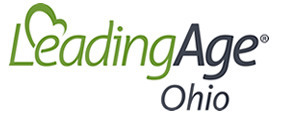Complete Story
03/11/2016
Miller Trusts: What You Need to Know
Miller Trust: What You Need to Know
Effective July 1, 2016, the Ohio Department of Medicaid is changing its disability determination system so that individuals who qualify for Supplemental Security Income (SSI) will automatically qualify for Medicaid. In legal terms, this means the state is implementing section 1634 of the Social Security Act, rather than using section 209(b). The impact of the 1634 implementation is that Medicaid spenddown will be eliminated. Individuals in nursing facilities, assisted living waivers and home and community based waivers will need to establish a Qualified Income Trust or Miller Trust to retain Medicaid eligibility.
LeadingAge Ohio and coalition members met this week with ODM to discuss updates as well as have outstanding questions answered. There are three very important points to share from the meeting:
1) Perhaps the most important point conveyed is that ODM is on track for the July 1 implementation of section 1634.
2) ODM is working to develop a tool kit of educational resources for both the individuals impacted as well as for AAA’s, case managers, county JFS staff, long-term care providers and others.
3) ODM has promised that providers will receive a list of any residents in their communities that need Miller Trusts BEFORE the state-contracted vendor reaches out to the individuals.
A complete listing of the highlights from the meeting include:
- ODM is rebranding the 1634 transition with the name Disability Determination Redesign (DDR).
- ODM is on track for a July 1 implementation.
- However, ODM has engaged with CMS to facilitate a smooth transition for people affected to avoid people dropping off on July 1.
- State Plan Amendments have been submitted to CMS for review.
- Some 70+ new rules are written and are under review internally; once review is completed, ODM will post the rules.
- ODM wasn’t able to provide a timeline for the State Plan Amendment review or rule release.
- ODM is also on track for the July 1, 2016 Ohio Benefits conversion.
- Individuals who establish trusts prior to the conversion to Ohio Benefits will be converted from CRIS-E to Ohio Benefits through an automated process.
- Those who establish a trust after July 1 will need to be entered through a manual process.
- Automated Health Systems (AHS) is the ODM-contracted vendor for the establishment of the Miller Trusts. ODM has given AHS provider association contact information. LeadingAge Ohio will be reaching out to AHS to schedule a meeting.
- Educational Process
- ODM has been working with Legal Aid to draft easy-to-understand educational notices. These notices will not be official Notices of Action.
- The educational notices will be tailored to the specifics of each affected group; individuals in each group have been identified through CRIS-E/
- Additional strategies to facilitate consumer and provider understanding include videos, FAQs on Miller Trusts, 1915i info on the behavioral health redesign website, bh.medicaid.ohio.gov and outreach activities including the development of training for the AAA, County Department of Jobs and Family Services, etc.
- ODM is developing a template for the Miller Trust documents.
- ODM is planning on getting the list of affected individuals to providers prior to AHS engaging residents.
- AHS will implement a stratification process to include cognitive ability.
- ODM is working through the competency issue.
- ODM is working through the competency issue.
- ODM is taking a hard look at the retroactivity issue for long-term patients needing to enter into trust agreements. They are considering a “grace period” to allow the delivery system to adjust to this new process. No confirmation on the length of the “grace period”.
- ODM indicated that there will not be a “fast track option” as requested by the coalition for people to be reviewed for home- and community-based waivers if they lose Medicaid or are being converted to Group VIII due to the transition. However, ODM encouraged providers to identify those anticipated to fall in this group and reach out to ODM.
- ODM shared that they are taking a serious look at the group of individuals who could possibly be in the middle of treatment when the transition occurs to better understand steps they may need to take to ensure no lapse in treatment.
- ODM analyzed the group of individuals who would need to transfer to the exchange and provided the following analysis for the 65+ age group: Of the total exchange population with income at 100-225% of the FPL (removing SPMI, Group VIII, duals and SSI individuals), 4,800 were 65+; 88% of that group had no claims for SFY 15. Of the 24% who had a claim, 90% had 15 claims or less for a total payment of $15 million. The majority of the usage centered on primary care.
LeadingAge Ohio is working to schedule educational events to provide opportunities for our members to have questions answered directly by ODM. Additional questions can be directed to Nisha Hammel at nhammel@leadingageohio.org
